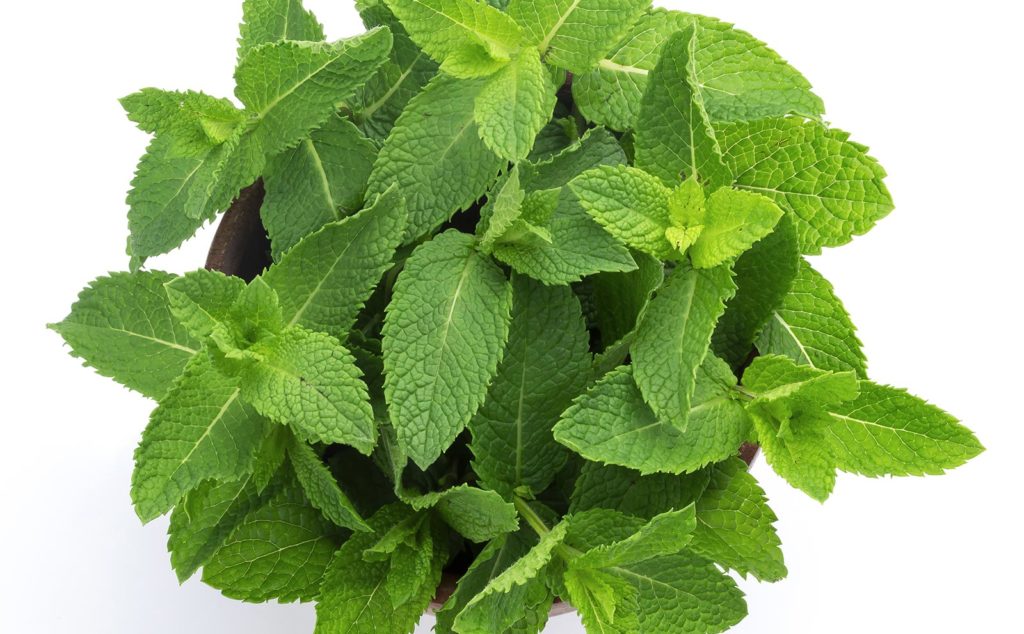Terpenes are a class of organic compounds that are responsible for the unique scents, flavours and colours of various plants.
But terpenes do more than just smell good – they also interact with the human body to provide a range of health benefits. In this blog post, we will explore the world of terpenes in more detail and discuss how you can use them to improve your health.
What are terpenes?
Terpenes are a large and diverse class of aromatic compounds produced by many plants and some animals. They are responsible for the distinctive smells of your favourite herbs and spices and are often used in essential oils. In the cannabis plant, terpenes are not only responsible for the unique flavour of each strain, but also play a role in the plant’s medicinal properties.
Whilst nearly all plants contain terpenes, they are most commonly encountered in aromatic herbs like mint or sage, citrus fruits, and cannabis.
Synthetic terpenes are also found in many household cleaning products, dyes and pesticides.
What terpenes do in cannabis plants
The Cannabis Sativa plant contains over 500 active ingredients, classified into 3 groups: cannabinoids, flavonoids and terpenes. Scientists now know that all three of these groups contribute to the plant’s medicinal properties in what is known as the entourage effect.
Terpenes play a key role in the plant’s medicinal properties. Some cannabis terpenes may help to calm and relax the mind, while others promote energy and focus. In fact, many cannabis experts say that instead of looking at the THC content of strain, it is more important to look at its terpene profile to get the effect that you want.
How do terpenes interact with the human body?
According to 2009 study, terpenes interact with our bodies in two distinct ways: psychologically (based on our expectations and associations with the scent) and pharmacologically (by interacting with receptors and hormones in the body)
Pharmacological interaction
Incredibly, although we are surrounded by terpenes, only two have been properly studied: limonene and linalool.
Limonene works by interacting directly with the brain, increasing the activity of serotonin, dopamine, and norepinephrine in different cerebral regions. In a 2013 study, limonene was found to reduce depression in rats. More research needs to be done to prove it can do the same for humans.
The action of Linalool is more complex, affecting at least 10 distinct pain-related functions in the body. It stimulates opioid and dopamine receptors and is believed to limit the formation of inflammatory cytokines, accounting for its anti-inflammatory properties.
Psychological interaction
Smelling an odour that you like or dislike, has a strong effect on your mood. According to a 2003 study, the scents people liked made them happier, less anxious, and less sensitive to pain, while the odours they disliked made them sadder and more uncomfortable with their pain.
Preconceptions also count, A 2004 study studied participants’ reactions to the suggested effects of different aromatic compounds. The results showed that the suggestion that an odour was stimulating was linked to an increased heart rate and skin conductance (physiological arousal), while the suggestion that an odour was relaxing had the opposite effect.
The power of suggestion was so strong that lavender, known to be relaxing, provoked a stimulating effect when this was suggested to the participants.
This all implies that expectations, beliefs, emotional experience and suggestion play a part in how terpenes and other compounds work which is no less real than any physiological effects, though it may vary more widely from person to person.
The benefits of terpenes
Terpenes have been shown to offer a wide range of potential health benefits, including:
- fighting cancer
- protecting the brain from damage
- powerful antioxidants
- anti inflammatory
- reducing anxiety, depression, pain, and even seizures.
Terpenes and the entourage effect
The entourage effect is the synergistic interaction between terpenes, cannabinoids, flavonoids and other cannabis compounds. Scientists believe these interactions may be responsible for the relief many experience after using medical marijuana strains. The CBD found in cannabis is believed to provide greater relief than THC alone because they are both more effective when used together with specific terpenes.
Put simply, the “Full Spectrum” of compounds working together give a more powerful effect than just one element alone. Just like an orchestra, where each instrument contributes to the whole of the symphony, the whole of the cannabis plant is greater and more powerful than the sum of its parts.
How terpenes affect us
The different chemical compounds contained in each cannabis strain will greatly influence the effect it will have on you. For instance, limonene is great at treating anxiety and depression, but linalool provides additional mood-enhancing effects that can help improve your overall outlook. They interact differently with each individual’s endocannabinoid system, and they may also affect other areas of the body.
Common Terpenes and their effects
Myrcene
Myrcene is the most abundant terpene in cannabis, recognized by its fruity grapefruit flavour. It is sometimes known as “the mother of terpenes” and is particularly active in synergizing the actions of other terpenes and cannabinoids. Outside cannabis it is mainly found in mangos and lemongrass and has antifungal and antibacterial properties. It is also believed to help with sleep, relaxation, pain relief, and reducing stress.
Myrcene-rich cannabis strains include: White Widow, Skunk and Special Kush
Alpha Pinene and Beta Pinene
Alpha Pinene and Beta Pinene are what give pine trees their smell. They are known to promote energy and focus, and are also claimed to have antidepressant and anti-cancer properties.
Pinene-rich strains include: Jack Herer, Blue Dream and OG Kush
Limonene
Limonene is found in citrus fruit. It may have anticancer properties, and in experiments with mice it has been shown to have anti-anxiety properties.
Strains rich in limonene include: Jack Herer, Sour Diesel, Durban Poison and Super Lemon Haze
Linalool
This is the terpene responsible for lavender’s distinctive smell. It has relaxing effects, is great for reducing anxiety and some studies show it may be helpful in treating seizures.
Linalool rich cannabis strains: Zkittlez/Skittles, Amnesia Haze, Special Kush and LA Confidential
Caryophyllene

Caryophyllene is a major ingredient in cloves, rosemary and hops (which are used to brew beer) it has a distinctive peppery cinnamon flavour and has powerful analgesic and anti-anxiety properties.
Caryophyllene-rich strains include: OG Kush, Super Silver Haze, Girl Scout Cookies (GSC) and Gorilla Glue
Humulene
Humulene is also found in hops and is responsible for the earthy spicy flavours of some beers. It has antibacterial properties and is thought to be particularly good for fighting tumours. It is also a natural appetite suppressant.
Humulene-rich cannabis strains include: Girl Scout Cookies (GSC), White Widow, Original Glue
Eucalyptol (cineol)

Eucalyptol gives mint, rosemary and tea tree their distinctive smell. It has anti-asthmatic properties and is a great cooling aroma on hot days.
Eucalyptol-rich cannabis strains: AC/DC, Super Silver Haze, Headband, Dutch Treat
Terpinolene
This terpene has a smell similar to lilacs, and is relaxing and sleep-inducing, similar to linalool.
Cannabis Strains: Jack Herrer, Ghost Train Haze, and Dutch Treat
How to find the right terpene profile for you
One of the best ways to find the right terpene profile for you is to experiment. Try out different profiles and see which one works best for you. You can also ask your friends or family members for their opinions. They may have had success with certain profiles that you haven’t tried yet.
Another thing to keep in mind is that not all terpenes are created equal. Some terpenes are more potent than others, so you may need to adjust your dosage accordingly.
Once you’ve figured out exactly which terpene profile works best for you, make sure you keep it simple and don’t overdo it with complicated recipes made by people who aren’t exactly sure what they’re doing.
Conclusion
Now that you know all about terpenes, you can make informed decisions about which strains and products will work best for you. Different terpenes offer different therapeutic benefits, so finding strains with the terpenes you need is key to getting the most out of your medication.
Keep in mind that everyone’s endocannabinoid system is different, so what works for one person might not work as well for another. Experiment with different strains and products to find what provides the greatest relief from your symptoms. And remember, always consult with a qualified healthcare professional before making any changes to your treatment plan.
Thanks for reading!
Terpenes FAQs
What are cannabis flavonoids and cannabinoids?
Flavonoids and cannabinoids are both compounds found in the cannabis plant along with terpenes.
Cannabinoids are responsible for the psychoactive effects of cannabis. There are over 113 different cannabinoids in cannabis but the two main ones are THC and CBD.
- THC is responsible for the “high” that people feel when they smoke or eat cannabis.
- CBD does not have any psychoactive effects, but it does have some therapeutic effects.
Flavonoids are found in all plants. They are responsible for the variety of colours in fruits, vegetables, and other plants. These amazing compounds help regulate cellular activity and fight off free radicals making our bodies work more efficiently. They also have a strong antioxidant effect and play a role in maintaining cardiovascular health.
READ MORE
Full spectrum CBD oil: what is it, and is it worth trying?
CBD for hangovers: how and why it works







